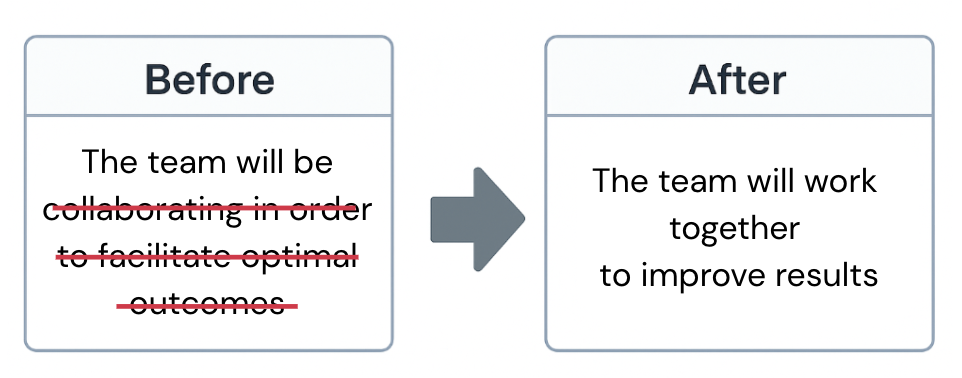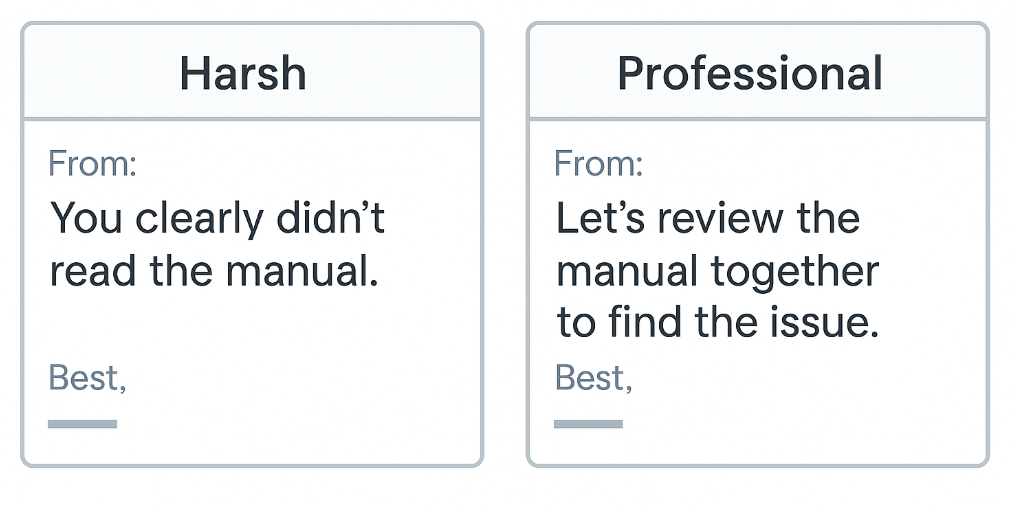Revise
Sharpen Your Message
Story
Revision Is the Chisel That Sets Your Message Free
Michelangelo didn’t just create beauty—he revealed it. He once said, “I saw the angel in the marble and carved until I set him free.” That’s what revision does for your writing.
Your first draft is the block of marble—rough, bulky, full of potential but not quite there. Like Michelangelo, you need to see what’s essential, then chip away the extra words, smooth the transitions, and shape the tone until the message shines through with clarity and purpose.In business communication, the masterpiece is a message that lands cleanly with your audience. Your chisel? Revision.
Main Idea
Revision Clarifies and Earns Trust
Writing is thinking—but revision is where your thinking sharpens. By revising, you align your message with your audience’s needs, fix what’s unclear, and elevate your credibility. You don’t just clean up your draft—you make it effective and trustworthy.
Agenda
What You’ll Learn in This Chapter
- How to revise for clarity, concision, and concreteness
- How to spot tone misfires and fix them
- How to use peer feedback to strengthen your writing
Reasons
Why You Should Revise
1. Improve Clarity, Concision, and Concreteness
Your first draft gets the ideas down. Revision ensures those ideas make sense to others. Readers trust writing that is clear, concise, and concrete.
Before and After: Sharpening Your Message

Original: Our team will be collaborating to facilitate optimal outcomes.
Revised: Our team will work together to improve results.
Original: There are many options available for resolving this issue.
Revised: You can call, email, or chat with support to resolve the issue.
Original: In regards to the upcoming quarterly meeting, please be advised that the agenda items are presently being finalized.
Revised: We’re finalizing the agenda for next quarter’s meeting and will share it by Friday.
Revising is the difference between leaving your ideas buried in stone or shaping them into something sharp, clear, and persuasive.
2. Evaluate and Adjust Tone
Even well-organized messages can fail if the tone is wrong. A revision pass is the time to check whether your voice sounds appropriate, respectful, and professional. Your audience determines your tone, so do the work to understand them.
Quick Tone Review Checklist
Original:“You clearly didn’t read the manual.”
Revised:“Let’s review the manual together to find the issue.”
Tone Matters: Word Choice Builds—or Breaks—Trust.

3. Use Peer Feedback to Improve the Message
You can’t revise well in isolation. A second set of eyes can catch what you miss—especially tone, assumptions, or unclear language.
Ask a Peer to Help You Spot:
- Sentences that feel confusing or too long
- Words that feel defensive, arrogant, or insincere
- Areas that need more clarity or specificity
Ask your reviewer to narrate their reactions as they read your work out loud, indicating what they liked, where they got confused, or where additional information would be useful. Take notes and make changes where needed.
Task
Practice Strategic Revision
“Choose your words carefully—especially the second time.”
Remember Michelangelo. Your ideas are already there—you just have to carve away what’s unnecessary. In moments of routine communication or high-stakes delivery, revision is how you free your message and shape it to resonate.
Articles
Stolar, Halina. “A General Guide to Understanding Written Plagarism.” EasyBib, October 28, 2020. Accessed July 2023.
Silverman, David. “That Written-by-Committee Flavor.” Harvard Business Review, December 21, 2009. Accessed July 2023.
Books
Abell, Alicia. Business Grammar, Style, and Usage: The Desk Reference for Articulate and Polished Business Writing, Speaking, and Correspondence. Aspatore Books, 2003.
Cunningham, Helen, and Brenda Greene. The Business Style Handbook: An A-to-Z Guide for Effective Writing on the Job. New York: McGraw Hill, 2013.
Einsohn, Amy. The Copyeditor’s Handbook: A Guide for Book Publishing and Corporate Communications. Oakland: University of California Press, 2006.
Pillay, Srini, MD. Tinker Dabble Doodle Try: Unlock the Power of the Unfocused Mind. New York: Penguin Random House, 2017.
Pinker, Steven. The Sense of Style. New York: Viking, 2014.
Videos
OWLPurdue. “Purdue OWL: Visual Rhetoric.” YouTube, published January 1, 2013. Accessed July 2023.